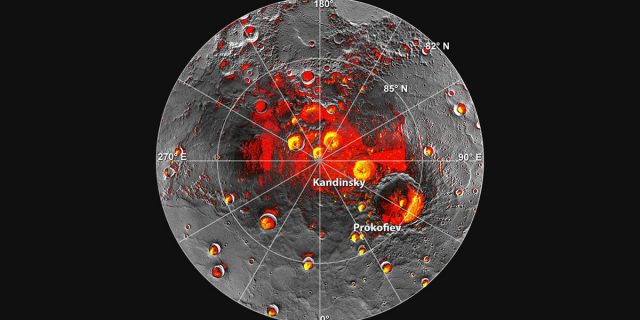MI weekly selection #219

Thickness of Mercury’s mysterious water ice deposits measured
Water ice on Mercury is about 50 meters thick on average, but there is some flexibility in that number and exactly where that water came from remains a mystery. Researchers used data from the MESSENGER spacecraft’s Mercury Laser Altimeter instrument to reach their estimate.
Parasite adds molecule to blood to help draw mosquitoes
The parasite that causes malaria releases a molecule into the bloodstream that makes it extremely enticing to mosquitoes, which drink the infected blood and then spread the parasite to other hosts. Plasmodium falciparum releases the molecule HMBPP, which mixed with red blood cells releases more carbon dioxide and airborne chemicals that produce an aroma that draws mosquitoes.
Early Proxima b unlikely to have harbored life due to flares from star
Nearby Proxima b likely lacked the building blocks needed for life because of powerful flares from the red dwarf star it orbits. “Now we know these red dwarf stars generate a lot of X-ray and extreme ultraviolet emissions at the habitable zones of exoplanets through frequent flares and stellar storms,” said Vladimir Airapetian, the study’s lead author.
Robotic bee developed to help pollinate flowering plants
A tiny flying robot can help pollinate flowering plants. The bottom of the drone contains a patch of horsehair treated with a sticky substance that picks up pollen from one plant and deposits it to another without damaging the flowers.
NASA creates chips for the heat of Venus
NASA’s Glenn Research Center has developed silicon carbide semiconductors meant to endure the temperatures of Venus, which are around 462 ºC. The NASA chips, which have only 24 transistors on them, must also contend with a high-pressure atmosphere that has quickly destroyed earlier missions to the planet.